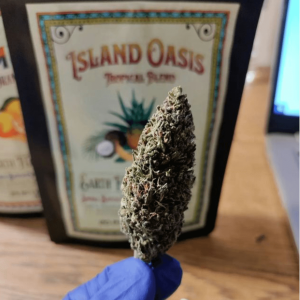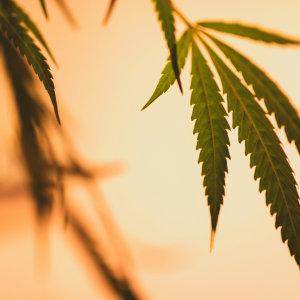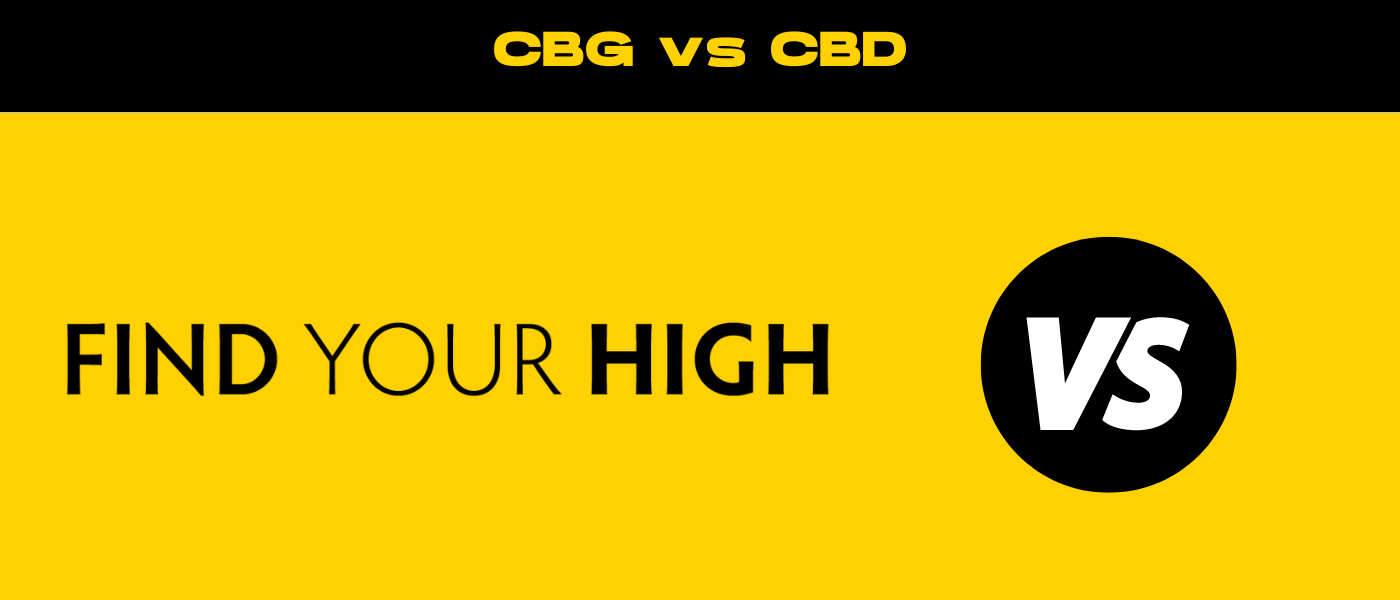The world of cannabinoids (think CBG vs CBD) is buzzing with popularity, and it’s easy to see why. These natural compounds, found in cannabis plants, are gaining significant attention for their potential health benefits and wide-ranging applications.
Among the many cannabinoids out there, CBG (Cannabigerol) and CBD (Cannabidiol) stand out in the crowd. While many people are familiar with CBD for its calming effects and therapeutic uses, CBG is beginning to make waves in wellness circles too.
This blog aims to shed light on these two fascinating compounds, helping you understand their differences, explore their unique benefits, and make informed choices about which might work best for you.
What are Cannabinoids?
Cannabinoids are naturally occurring compounds found in cannabis plants. These substances are responsible for the plant’s diverse effects on the human body.
When cannabinoids enter the body, they interact with a complex network of cannabinoid receptors in our central nervous system known as the endocannabinoid system (ECS). This system plays a key role in maintaining balance in various physiological processes such as mood, appetite, pain sensation, and immune response.
By binding with receptors in the ECS, cannabinoids can help regulate these functions, offering potential relief from various health conditions. Thanks to this interaction, cannabinoids are being studied for their potential benefits in areas like stress management, inflammation reduction, and overall wellness.

CBG: The New Cannabinoid on the Block
Cannabigerol, or CBG, is often referred to as the “new kid on the block” in the world of minor cannabinoids. Unlike its more famous cousin CBD, CBG is present in much smaller quantities in cannabis plants but exhibits unique properties that are drawing attention.
CBG is processed early from the cannabis plant; it’s considered a “parent” cannabinoid since it’s the precursor to other cannabinoids like THC and CBD. This precursor role is crucial because it means CBG helps shape the profile of the plant’s cannabinoid content.
As scientific research unveils more about CBG, its potential roles in promoting eye health, reducing inflammation, and exerting antibacterial properties are being explored.
CBD: The Renowned Medicinal Cannabinoid
Cannabidiol, or CBD, has made a name for itself as one of the most popular cannabinoids used today. It is widely recognized for its therapeutic potential and is legally available in many countries in various forms such as CBD oils, tinctures, and topicals.
Unlike THC, CBD does not produce a psychoactive “high,” making it a desirable option for those looking to harness its therapeutic benefits without mind-altering effects. Common uses of CBD include managing anxiety, alleviating chronic pain, and improving sleep quality—all without the risk of addiction.
Its ability to offer a sense of tranquility without impairment keeps CBD at the forefront of cannabinoid wellness.
Extraction and Production Differences
Understanding how CBG and CBD are extracted and produced can help you appreciate their unique characteristics and what goes into bringing these powerful cannabinoids to market.
Methods of Extracting CBG and CBD:
CBG Extraction:
- The process typically involves selecting younger cannabis plants as CBG is more abundant at this stage.
- Common methods include CO2 extraction and solvent-based extraction, both designed to preserve the integrity of the cannabinoid.
CBD Extraction:
- Usually derived from more mature cannabis plants.
- Similar extraction methods are used, with a focus on efficiency to yield larger quantities due to CBD’s higher presence in the plants.
Challenges and Cost Factors in Production:
CBG Production:
- Since CBG is often found in trace amounts, production can be expensive, necessitating the use of more plant material to yield desired quantities.
- Its rarity contributes to higher costs and limited availability on the market.
CBD Production:
- Generally more cost-effective because of its prevalence in hemp and cannabis plants.
- Industrial hemp is often used, which is more economical for large-scale production.
Purity and Potency Considerations for Each Cannabinoid:
CBG:
- Products are often praised for their purity, as specialized extraction techniques are needed, often resulting in high-quality isolates or full-spectrum options.
- Potency can vary, but focus is generally placed on maximizing CBG concentration due to its lower natural abundance.
CBD:
- Due to large-scale production and high demand, a wide range of purities is available, from raw forms to highly refined isolates.
- Potency can be more consistently controlled, making it easier for consumers to find products that meet their needs.

How CBG and CBD Work in the Body
Both CBG and CBD interact with the endocannabinoid system (ECS), a critical network in the body that helps maintain balance in many physiological processes. However, they engage with distinct receptors, leading to their unique effects.
CBG primarily connects with the CB1 and CB2 receptors and has a knack for potentially enhancing mood, reducing inflammation, and supporting neuroprotective activities. On the other hand, CBD doesn’t bind directly to these receptors but influences them indirectly, providing calming sensations without a high, thus making it great for anxiety relief and pain management.
Both cannabinoids tap into the ECS’s balancing act, but their differing modes of action result in varied health benefits, allowing users to tailor wellness approaches based on individual needs and conditions.
Health Benefits: CBG vs CBD
When it comes to health benefits, both CBG and CBD offer unique therapeutic properties that appeal to different wellness goals.
CBG, though less prevalent, is being studied for its potential in promoting eye health, combating inflammation, and displaying antibacterial activity. Its anti-inflammatory properties make it an appealing option for those dealing with conditions like inflammatory bowel disease. Additionally, CBG is being explored for its neuroprotective capabilities that might help in conditions such as Huntington’s disease.
CBD, on the other hand, boasts a more detailed resume of well-established benefits. Widely recognized for its soothing attributes, CBD is commonly used to alleviate anxiety, manage chronic pain, and improve sleep quality. Its ability to offer relaxation without the psychoactive effects makes it a go-to for those seeking calmness in a natural way.
Potential Side Effects and Risks
Despite their benefits, it’s essential to be aware of potential side effects and risks associated with CBG and CBD use. Both cannabinoids are generally well-tolerated, but some individuals may experience minor side effects, such as dry mouth, drowsiness, or changes in appetite.
Particularly for CBD, there is a concern about possible interactions with medications, as it can affect the metabolism of drugs like blood thinners. CBG, while still under extensive study, has a less documented profile but could potentially have similar interactions.
For safe consumption, it is advisable to consult healthcare providers, especially if other medications are involved. Starting with lower doses and gradually adjusting based on individual responses can also help mitigate any adverse effects.

Legal Status and Market Availability
Navigating the legal landscape for CBG and CBD can be a bit tricky as it varies significantly across regions.
In the United States, CBD derived from hemp is federally legal, thanks to the 2018 Farm Bill, allowing products to be sold in markets nationwide, though individual state laws can impose stricter regulations. CBG, while gaining interest, isn’t as widely discussed in legal texts, often following the same guidelines as CBD when derived from hemp.
However, international laws differ, with countries like Canada allowing both CBG and CBD products under their cannabis regulations, while in places like Europe, regulations can vary from one nation to another. Despite the differences, both CBG and CBD are becoming increasingly available, with a wide variety of products ranging from CBD oil and tinctures to edibles and topicals.
As legislative attitudes continue to shift towards cannabinoids, future trends point towards a broader acceptance and potential for even more diverse product offerings, promising exciting developments in the cannabinoid market.
Consumer Choice: CBG, CBD, or Both?
When deciding whether to incorporate CBG, CBD, or a combination of both into your wellness routine, several factors come into play.
Individual health goals are crucial, as CBG and CBD present unique benefits. If eye health and inflammation management are top priorities, leaning towards CBG might be beneficial. Alternatively, for those seeking relaxation and anxiety relief, CBD could be the right choice.
Additionally, the potential synergistic effects of using both cannabinoids should not be overlooked, as they might amplify their individual benefits, tapping into what’s known as the “entourage effect.”
Personalization is key, and by starting with small doses and observing their effects, you can adjust to what suits your physiological needs best.
CBG vs CBD: Conclusion
Throughout this blog, we’ve explored the unique attributes and health benefits of CBG and CBD, from their different interactions with the endocannabinoid system to their therapeutic properties.
As you consider their incorporation into your wellness journey, it’s essential to explore these cannabinoids with an open mind and under the guidance of healthcare professionals when needed.
As research continues to unfold, the future potential for these compounds in healthcare is promising, paving the way for innovative approaches to wellness and treatment. Whether choosing CBG, CBD, or both, the evolving landscape offers exciting opportunities to enhance individual health and wellbeing.

Frequently Asked Questions
1. Is CBG more effective than CBD?
Determining whether CBG is more effective than CBD largely depends on individual health goals and needs. While CBD is renowned for its calming effects and is often used for managing anxiety, pain relief, and improving sleep, CBG is gaining attention for its potential in supporting eye health, reducing inflammation, and its neuroprotective properties. It’s not so much about one being better than the other, but rather identifying which aligns more closely with your wellness objectives.
2. How does CBG make you feel?
CBG is generally reported to provide a sense of calm and focus without the intoxicating effects associated with THC. Users often describe an uplifted mood and enhanced concentration. Like CBD, it tends to be non-psychoactive, which means it doesn’t produce the “high” that THC does. However, everyone’s experience can vary, so starting with a small dose to gauge personal response is advisable.
3. What are the benefits of CBG?
CBG is being studied for a variety of potential health benefits. These include antibacterial properties, anti-inflammatory effects, and its potential role in supporting neuroprotection, which could be beneficial for those with conditions like Huntington’s disease. Additionally, it may aid in promoting eye health by helping prevent glaucoma, thanks to its ability to reduce intraocular pressure. As research continues, more benefits may come to light.
4. What are the downsides of CBG?
While CBG is generally well-tolerated, it’s not without potential downsides. Some users might experience mild side effects such as dry mouth, drowsiness, or appetite changes. Due to limited research compared to CBD, the long-term effects of CBG are still not fully understood. Furthermore, like other cannabinoids, CBG may interact with certain medications, so it’s key to consult with a healthcare provider, especially if you’re on any prescription drugs.

 Rewards
Rewards




